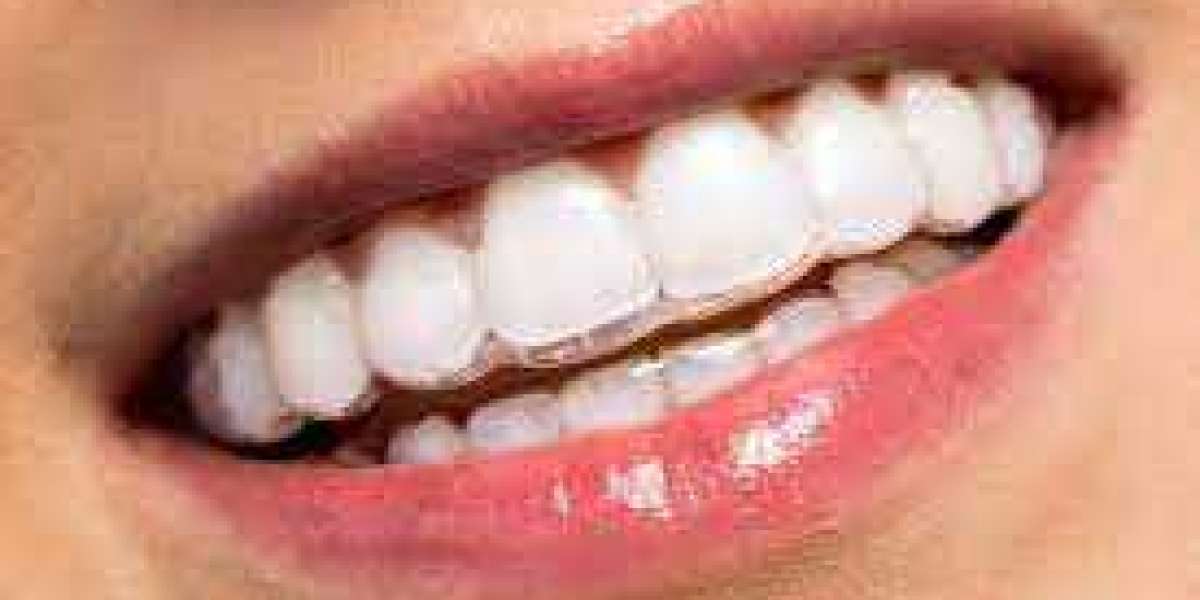Retainers play a crucial role in orthodontic treatment, helping to maintain the results of braces or clear aligners. After your teeth are straightened, a retainer keeps them in place and prevents them from shifting back to their original positions. Understanding the science behind how retainers work can give you a better appreciation of their importance and the role they play in keeping your smile beautiful. In this article, we’ll explore how Dental Retainers function and why they are necessary for maintaining your dental alignment.
The Role of Teeth and Bone Movement:
Teeth Movement – During orthodontic treatment, braces or aligners gradually shift your teeth into their new positions. This process involves applying constant pressure to the teeth, which causes the bone around them to remodel.
Bone Remodeling – As pressure is applied to the teeth, the surrounding bone breaks down on one side and rebuilds on the other. This is known as bone remodeling. The process is gradual and takes time, which is why it’s essential to wear a retainer after treatment to stabilize the teeth and prevent relapse.
Periodontal Ligament – The periodontal ligament, a connective tissue that holds the teeth in place, also plays a significant role in tooth movement. As the teeth shift, the ligament stretches or compresses, allowing the teeth to adjust to their new positions.
How Retainers Stabilize Teeth?
Bone and Tissue Adjustment – After orthodontic treatment, the bone and soft tissues around the teeth are still in a state of transition. Retainers provide gentle pressure to help stabilize the teeth in their new positions while the bone and tissues continue to adapt.
Preventing Shifting – Without a retainer, the teeth may gradually shift back toward their original positions. This is because the bone and surrounding tissues haven’t fully adjusted, and without support, the teeth could relapse into misalignment.
Gradual Shifting Prevention – Retainers act as a safeguard by holding the teeth in place during this critical period, ensuring that the alignment is maintained as the bone and ligaments strengthen around the new positions.
The Types of Forces Applied by Retainers:
Passive Forces – Unlike braces, which apply active forces to move the teeth, retainers use passive forces to maintain alignment. These gentle forces help stabilize the teeth without altering their positions further.
Maintaining the Result – The primary purpose of the retainer is to hold the teeth in their correct positions, so the forces it exerts are minimal and designed to prevent shifting rather than cause further movement.
Preventing Overcorrection – Retainers also ensure that the teeth don’t shift too far in the opposite direction, maintaining the balance achieved during the orthodontic treatment.
Why Bone Takes Time to Stabilize?
Bone Density Changes – The bone around the teeth must undergo a process of density and structure changes to support the newly aligned teeth. This process doesn’t happen overnight, which is why wearing a retainer for an extended period is necessary to prevent relapse.
Tissue Adaptation – In addition to bone remodeling, the soft tissues such as gums and ligaments need time to adapt to the new position of the teeth. The retainer holds the teeth in place while this adjustment occurs, ensuring long-term stability.
Long-Term Wear – Retainers are designed to be worn for extended periods, sometimes for years or even for a lifetime, depending on the severity of the original misalignment and the type of treatment. Over time, the bone and tissues stabilize, and the retainer use can gradually be reduced.
The Different Types of Retainers and Their Function:
Removable Retainers – These retainers, such as Essix and Hawley retainers, are custom-made to fit the shape of your mouth. They can be removed for eating or cleaning and are typically worn for a set amount of time each day.
Essix Retainers – Made of clear plastic, Essix retainers are lightweight and nearly invisible, providing a comfortable and discreet way to maintain your teeth alignment.
Hawley Retainers – These retainers have a wire frame that holds the teeth in place, with an acrylic base that covers the roof of the mouth or the bottom teeth. Hawley retainers are adjustable and durable.
Fixed Retainers – These are permanently bonded to the back of your teeth, usually on the lower front teeth. Fixed retainers provide constant support and prevent shifting without the need for removal.
Long-Term Solution – Fixed retainers are often used for patients who need continuous support or have difficulty remembering to wear a removable retainer.
Why Consistency is Key with Retainer Use?
Preventing Shifting – The effectiveness of a Best Retainers relies on consistent use. If you fail to wear it as prescribed, your teeth may shift back to their previous alignment, potentially requiring additional treatment.
Initial Intensive Use – During the first few months or years after treatment, wearing your retainer as much as possible is critical to the stabilization process. Your orthodontist will provide specific guidelines for wear based on your individual needs.
Nighttime Wear – In most cases, once your teeth are stable, you may be instructed to wear your retainer only at night. However, some patients may need to continue wearing the retainer full-time, depending on the severity of the misalignment and the success of the initial treatment.
In conclusion, retainers are an essential part of the orthodontic process, helping to maintain the alignment of your teeth after braces or clear aligners. Through a combination of bone remodeling, soft tissue adaptation, and gentle forces, retainers ensure that your smile stays straight for the long term. By understanding the science behind how retainers work and following your orthodontist’s recommendations for wear and care, you can preserve the results of your orthodontic treatment and enjoy a healthy, beautiful smile for years to come.











